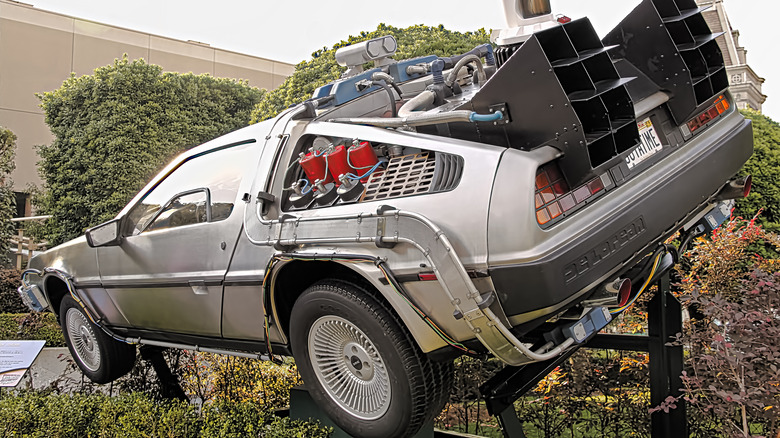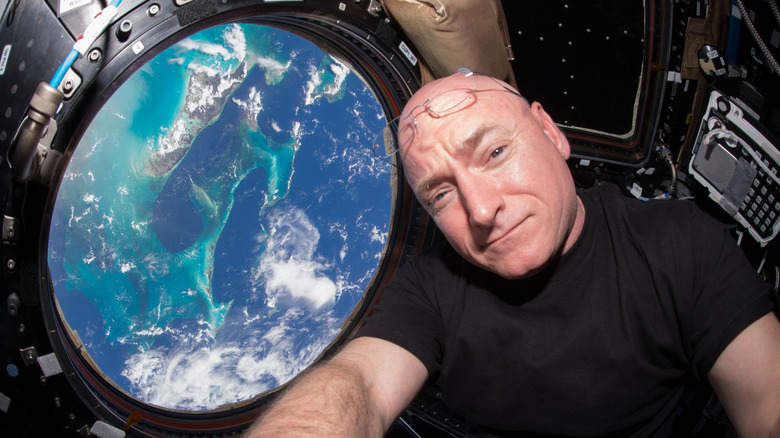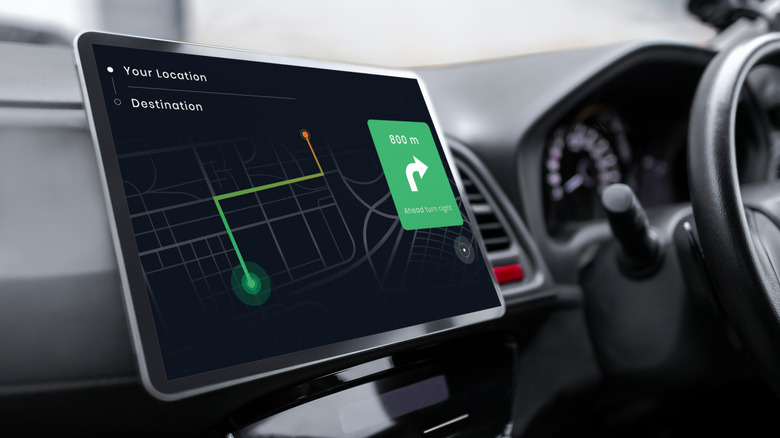Why Time Travel Is Already Possible, According To NASA
Many of us have seen science fiction or fantasy movies, or read novels that feature time travel. One of the most famous of these is the "Back to the Future" trilogy from the '80s which starred Michael J. Fox as Marty McFly and Christopher Lloyd as Doc Brown. In the trilogy, Doc Brown hilariously turns a DMC DeLorean into a time-traveling machine that brings him and his compatriot on adventures through time. The concept of time travel has wide appeal in popular culture as, let's face it, who wouldn't want to be able to travel into the past or the future?
The reality, however, is somewhat more mundane. While we can't necessarily time travel in the way we imagine, powerful telescopes like the Hubble space telescope do actually let us look back in time to how the universe once was. It might not be as exciting as traveling through time in a DeLorean, but it is certainly the next best thing. For example, early this month, astronomers announced that they had observed a star, (dubbed Earendel), that existed as little as 900 million years after the Big Bang.
This star is believed to be one of the earliest stars in existence and is thought to have died in a fiery explosion 13 billion years ago. However, because the light from Earendal has taken over 13 billion years to reach the Hubble telescope, we have effectively been able to look back in time to what Earendel looked like before it exploded.
We can travel in time, just not like in the movies
Earendel was observed using an effect where the fabric of space-time is warped by gravity – a phenomenon predicted by Einstein. This causes light to bend as it passes by objects with large masses, like planets, suns, or even galaxies, allowing us to see around and even behind these objects. The effect is known as gravitational lensing and is part of Einstein's theory of general relativity. Einstein's theory also has implications for how we experience time, which, as it turns out, is relative. At a most basic level, as NASA explains, we all travel through time at approximately the same speed of one second per second. But the way we experience time changes according to both how fast we are traveling and the way gravity influences space-time.
NASA described an experiment to show that the faster you travel, the slower you experience time. It involved having a clock measuring time on the ground and a clock measuring time onboard an airplane traveling in the same direction as the Earth rotates. After the plane finished its journey around the globe, the scientists found that the clock on the plane had traveled through time slightly slower than the clock on the ground. Because of these same time dilation effects, after spending 1 year in space on the low Earth-orbiting ISS, astronaut Scott Kelly was technically 0.01 seconds younger than his twin brother Mark who stayed on Earth.
Time travel in everyday life
Many of us have used GPS on a phone, a watch, or while driving a car to navigate. For some of us, it's an everyday tool we can scarcely live without. However, as you may know, GPS relies on satellites, (31 in total), of which at least four are needed to communicate with your device on the ground to accurately let you know where you are located or help navigate you to where you want to go.
However, as these satellites are orbiting above the Earth at 12,550 miles above the surface, and thus at a height where the effects of Earth's gravity are considerably weaker than they are on the surface, time actually passes more quickly – by a fraction of a second. As a result, the scientists who run the global GPS system have to compensate for this difference in how time passes for the system to offer a level of accuracy that's useful to you in real-time. So while we aren't currently able to travel through time in the most extravagant ways we've come to wish for courtesy of science fiction stories, we are each time travelers anyway — so says NASA!


